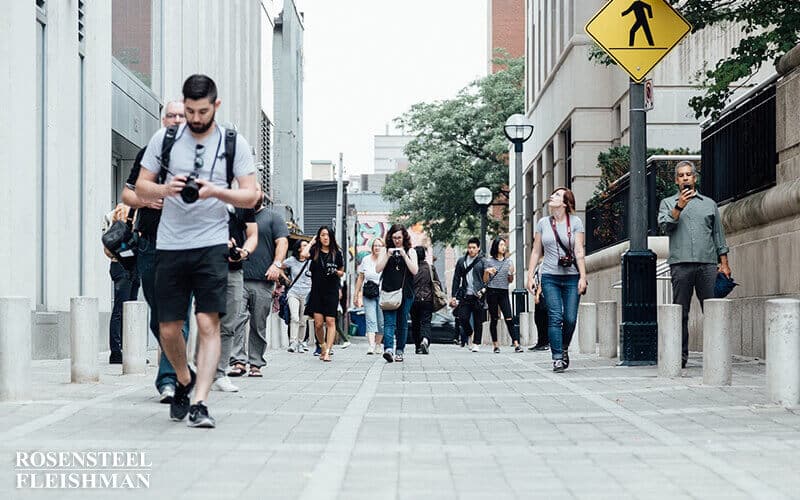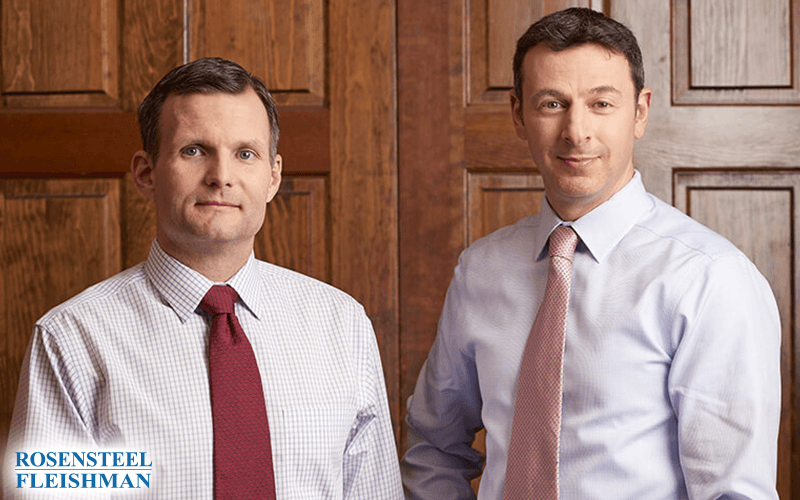After an accident involving a large commercial truck, most people are left feeling overwhelmed, confused, and unsure of what to do next. These crashes are often far more serious than typical car accidents because of the sheer size and weight of trucks. When a driver is fatigued behind the wheel, the risks increase dramatically. Sleep-deprived […]

Pedestrian Accidents
Pedestrian injuries in the state of North Carolina, and specifically in Charlotte have been an increasing problem. Charlotte is especially vulnerable to some of these accidents for a variety of reasons. Charlotte is growing rapidly and with the increased population comes increased risk for those on the roads. North Carolina only trails Texas, California, Florida, and Georgia in traffic accidents involving pedestrians.
Whether pedestrians in Charlotte are on electric scooters, bikes or walking there is an unusually high occurrence of pedestrians struck by vehicles. When an accident involving a pedestrian and a vehicle occurs the central question is usually who is at fault. Fault in these cases is typically determined by determining which party either the driver of the vehicle or the pedestrian acted with negligence. In North Carolina law, negligence refers to the careless or willful actions or inaction of the responsible party, which resulted in injuries.
North Carolina negligence laws follow the doctrine of contributory negligence. This would bar the plaintiff from compensation if he or she were even partially at fault. In this type of case that we are looking at it is possible for contributory negligence to be present. If a pedestrian is crossing the street illegally and is struck by a car that is speeding under North Carolina law the pedestrian would not be entitled to collect because they are partially at fault for illegally crossing the street. North Carolina statutes define pedestrian laws along roadways within § 20-174. This statute states:
(a) Every pedestrian crossing a roadway at any point other than within a marked crosswalk or within an unmarked crosswalk at an intersection shall yield the right-of-way to all vehicles upon the roadway.
(b) Any pedestrian crossing a roadway at a point where a pedestrian tunnel or overhead pedestrian crossing has been provided shall yield the right-of-way to all vehicles upon the roadway.
(c) Between adjacent intersections at which traffic-control signals are in operation pedestrians shall not cross at any place except in a marked crosswalk.
(d) Where sidewalks are provided, it shall be unlawful for any pedestrian to walk along and upon an adjacent roadway. Where sidewalks are not provided, any pedestrian walking along and upon a highway shall, when practicable, walk only on the extreme left of the roadway or its shoulder facing traffic, which may approach from the opposite direction. Such pedestrian shall yield the right-of-way to approaching traffic
Provided that a pedestrian has followed all of the laws and is struck by a vehicle the best option would be to peruse a case based on the driver’s negligence. The plaintiff will have to prove that the driver behaved in a thoughtless manner and as a result injuries were sustained. For a plaintiff to prove that a driver acted with negligence it must be proven that a driver owed you a duty of care. The plaintiff must prove that this duty of care was violated. As a result of that violation by the driver, it must be proven that the driver was the actual and proximate cause of the plaintiff’s injuries. Finally, it must be proven that there were actual damages, for example, broken bones, medical bills, lost wages, emotional damage, to name a few.
The conduct of a driver is measured against that of a reasonable person when establishing a standard of care. The driver who strikes a pedestrian is deemed to have knowledge of things known by the average member of society, and is expected to act like an average member of society would under those circumstances. For instance, it is known by the average member of society not to drive a motor vehicle while under the influence, anyone who does that has violated the standard of care.
A plaintiff who is successful in establishing a standard of care must show exactly how the at-fault driver violated the typical standard of care. A driver has a legal responsibility to operate their vehicle with a standard of care at all times, especially for pedestrians. In most cases, if a defendant has violated a driving statute it can be said that their conduct fell below the standard of care required to operate a vehicle.
For the plaintiff to show actual cause they must show that there is a factor in the case without which injuries would not have occurred. It is typical in these instances to use the “but-for test.” The plaintiff will ask, but for the defendant’s actions would the injuries have occurred? The plaintiff will also have to show proximate cause. Proximate cause in a pedestrian injury case would involve an accident, which results in a particular injury due to negligence or intentional wrongful act of a driver. A plaintiff must prove that the driver’s conduct was the factual cause and the legal cause of the injuries to the pedestrian.
A pedestrian who is injured by a driver who has violated a safety-related statue can possibly sue for negligence per se. Negligence per se is a legal doctrine that holds a defendant responsible by virtue of violating a statute. Provided that negligence per se is proven then a defendant is presumed not to have acted with a reasonable standard of care. In a case where negligence per se is proven it no longer has to be decided if a defendant’s actions were reasonable. It can be assumed that the actions of the defendant violated a statute. As the facts of the case are presented it will still need to be decided whether the violated statute caused the accident, but it can safely be assumed that the standard of care was not met.
Proving the damage sustained in an accident is a key element in the case against the at-fault driver. Typically in a case where a pedestrian is struck they would be showing that bodily harm occurred. When bodily harm occurs there are quantifiable damages, such as medical expenses and lost wages. Showing medical bills can prove this, and time missed from work that would not have otherwise been missed but for the injuries sustained. Other damages can also be claimed such as pain and suffering, or emotional distress although those are less quantifiable.
When a plaintiff is able to show that there was a standard of care, the driver violated that standard of care, and that violation was the actual and proximate cause of the injuries then a plaintiff can recover damages in the case of being struck by a vehicle. To discuss your case please contact us at (704) 714-1450 to speak with a local Charlotte pedestrian accident attorney. You will speak directly with an attorney who can discuss your rights and options. There is no fee to speak with an attorney.
Additional Personal Injury Articles
After a motorcycle accident, it’s normal to feel overwhelmed. There’s the shock of what happened, the physical pain, and the sudden wave of questions about what comes next. Between dealing with insurance companies and trying to heal, it's easy to feel like you’re being pulled in too many directions. Many people aren’t sure what their […]
Bicycle crashes can be frightening on their own, but when they lead to spinal injuries, the stress can multiply fast. Between dealing with medical appointments, physical discomfort, and a growing stack of paperwork, the last thing anyone wants is to feel uncertain about what to do next. Spinal injuries can range from painful and temporary […]
Losing a spouse is devastating, and when their death was caused by someone else's actions, the grief is often accompanied by confusion, anger, and a sense of injustice. For many in Charlotte who have relied on a spouse not just emotionally, but financially and practically, the idea of filing a wrongful death claim can feel […]
